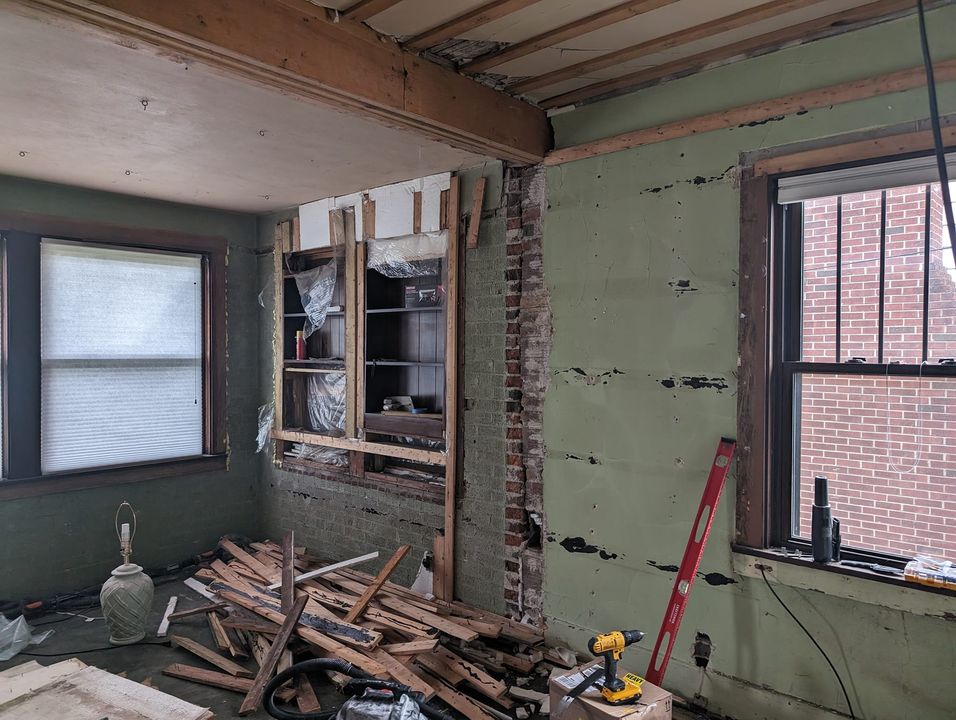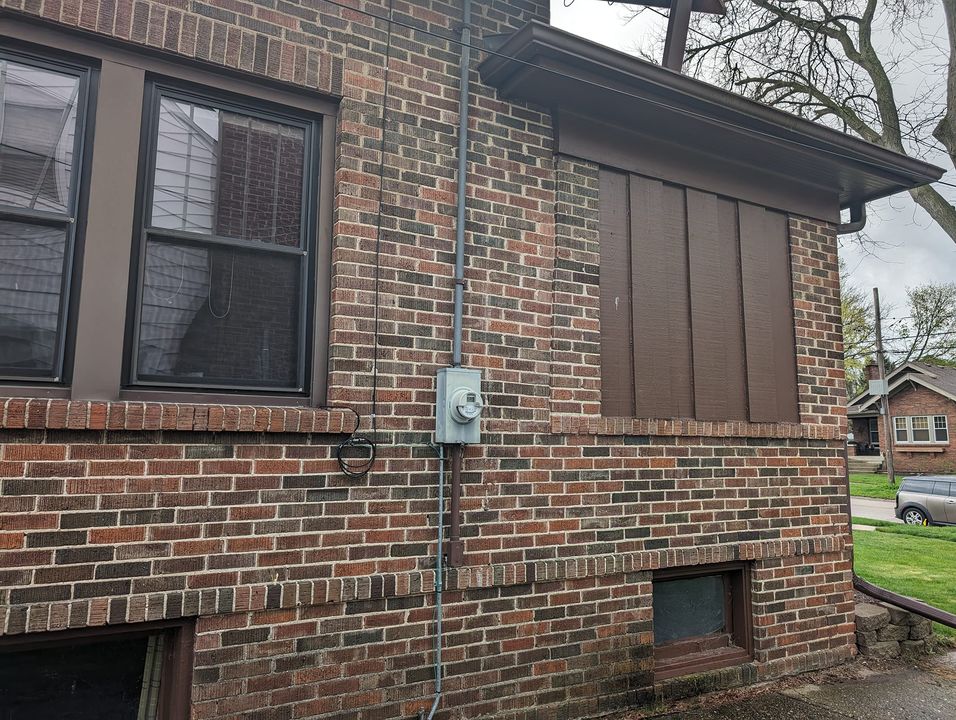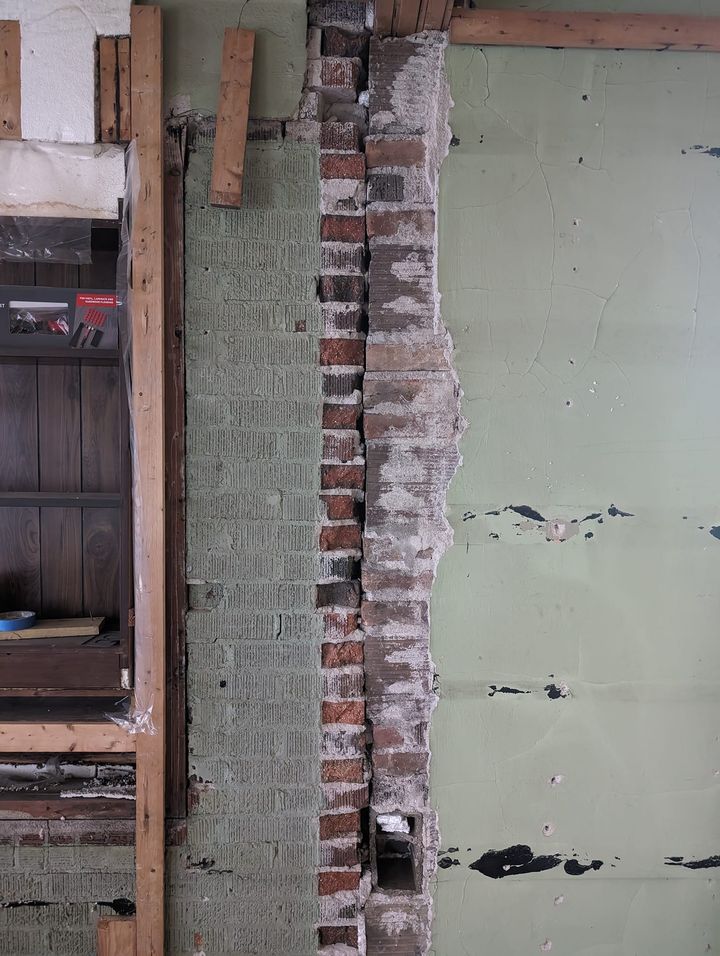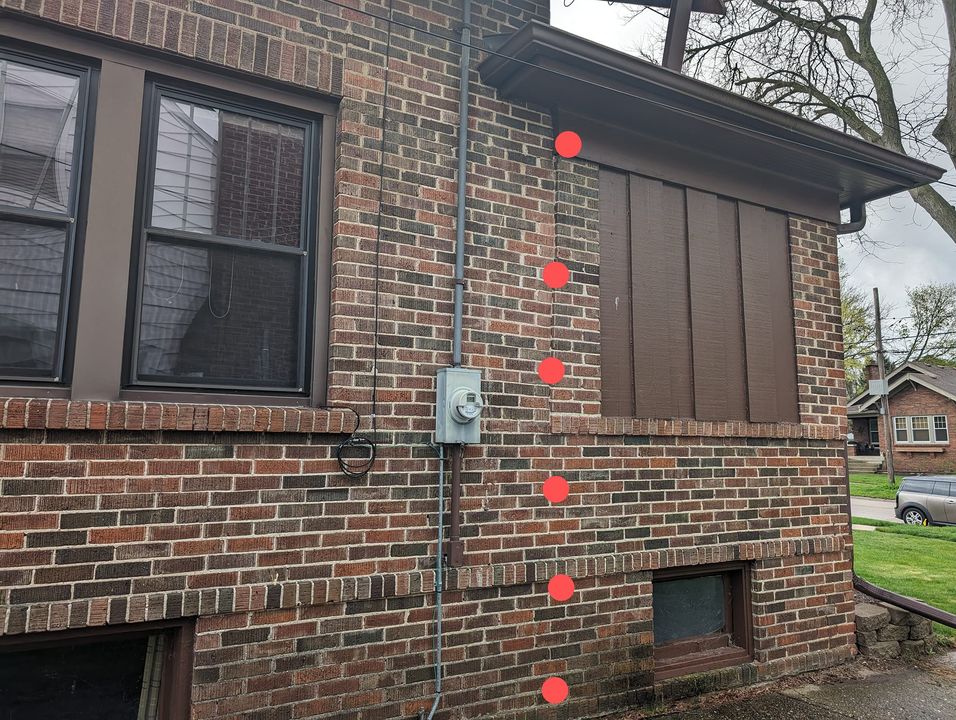Can a non-professional fill gaps with mortar and skim coat joint compound on a 100-year-old house addition wall previously covered in paneling?
10 months ago
Last Updated: September 3, 2024
Hey there! I’m trying to figure out what to do with this wall. There’s a little gap in the vertical section – should I fill it with mortar? And what about the brick – can I just skim coat joint compound over it? My plan is to mortar the joint and skim coat the wall, but I’m definitely not a pro at this 🤣
This house is about 100 years old, and I believe this was added on at some point. When I bought the place, there was paneling covering the wall.
I added a photo to help you see what I’m talking about with the vertical portion 🤣




Why not just re-fit it and put up sheetrock instead? It’ll give you a cleaner finish and save you a lot of hassle.
I’ve actually gotten pretty good at smoothing textured walls and fixing cracks in lathe plaster. So right now, it seems like smoothing it out might be easier than dealing with drywall and figuring out window frame extensions.
I get where you’re coming from, Logan rizzly. Parging can definitely be a lot of work, but it’s worth it. You should definitely watch some YouTube videos on how to parge brick. ood luck with your project!
So, you’re thinking it’s a vertical wall? Hmm… looking at the pictures, it does seem like a real brick house and not just a brick facade. If you see air coming through the crack, fill it with caulk, foam, mortar, or whatever works. Add a layer to the wall, put up some drywall, and finish it off. Or you could go for shiplap, cedar, or knotty pine, whatever suits your style.
Skim the joint compound with mortar because moisture is seeping through the solid brick wall, causing it not to last.
I would think about using lime plaster for the interior, instead of opting for portland cement or drywall compound.
Definitely! Fill the small gap with mortar for stability. When it comes to the brick, you could consider skim coating with joint compound after prepping the surface well to ensure good adhesion. Are you planning more renovations around the house?
Do you think heavy duty primer would be best for the prep work? I have a lot of projects, mostly cosmetic. This room is particularly unsightly with paneling covering the walls and a drop ceiling for over 50 years for sure.
You could consider using the heavy duty option if the cost is not too high.
Logan rizzly If you need help with tile or floor installation, feel free to reach out to support@1bidpro.com. I can assist with your remodeling project, explain contractor expectations, and protect you from unnecessary charges. I can also provide an estimate of the hours required for the job. 🙂
Using mortar would be a better choice than joint compound. Also, make sure to use a proper vapor barrier.
I’m curious about how well that addition is connected to the rest of the house. The gap seems to indicate that the bricks aren’t properly connected. It’s hard to tell from the photos what exactly needs to be done, but it’s definitely worth investigating. In my own home, I found that some additions weren’t securely tied to the rest of the house. In fact, one was only held on by four nails! 🙂
I share the same concern. The exterior brick is connected to the house and there are no visible cracks. It seems like there has been no movement in over 50 years.
I tend to go overboard, so if it were me, I would secure it further by running bolts through the large header that runs perpendicular to the bricks. I count 4 2Xs clearly and there might be two more. If you’re hesitant to create a hole on the other side of the ceiling, using some substantial lag bolts could reinforce whatever is currently holding the two sections of the house together.
Then again… It has been stable for 50 years as you mentioned, but my addition was also held up with just a few nails. I used plenty of lag bolts and hurricane ties for all the ceiling and floor joists.
One of my life mottos is: Never Do In Moderation What Can Be e To Excess. 🙂